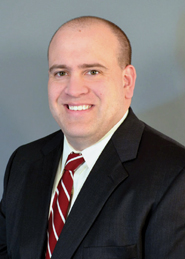While not 100 percent certain his problems come from high-frequency trading, Mike OBrien is suspicious.
Eaton Vance, the Boston-based investment management firm where OBrien is head of global trading, started using foreign-exchange algos four or five years ago. At the time, Credit Suisses AES platform was the dominant player. They have a very good product and well-designed algos, OBrien said. However, hes not as happy with FX algos as he once was.
[See Traders Magazine’s FX Coverage Here]
Algos can work well when Eaton Vance is trading a stable currency thats not moving around a lot while the firm is trying to trade closer to the midpoint, OBrien said. Algos are also useful in trying to get large trades done when the firm doesnt want to show its hand to the market, he added.

But lately OBrien has become concerned that the algos are having a market impact. The trading formulas dont seem to be as effective as they were a few years ago, and the market moves against us far more than it should in a random environment, he said.
And OBrien is seeing this issue with the algos of a number of investment firms. Im fearful that there may be algos in the market looking for this type of flow, he said.
Eaton Vance is currently trying to identify what is and is not working, looking at executions by strategy, currency pair and time of day. The investment manager is not alone with its suspicions.
A sharp rise in the use of high-frequency trading strategies in the foreign-exchange market is causing consternation among money managers and brokers, and trading venue operators are taking steps to calm their fears.
Slightly more than 40 percent of trading volume in spot FX is currently represented by high-frequency trading, up from 3 percent a decade ago, according to Aite Group. Popular trading venues include Currenex and Hotspot FX and electronic interdealer broking platforms EBS and Reuters. Activity is most prevalent in the major currency pairs.
This year, two interdealer trading venues have implemented processes to mitigate the impact of HFTs. EBS, a unit of interdealer broker ICAP, has taken steps to address the concern about a race to zero, which motivates trading firms to invest inordinately in reducing latency.
EBS recently implemented initial steps to curb high-speed trading by eliminating any speed advantage one party might have over another in the race to rank high up in the queue.
Under the move, messages transmitting orders for the Australian dollar/U.S. dollar currency pair-the fifth most liquid-are bundled into batches and run through a process that randomizes their report in the queue, a report from Reuters said. As a result, the first message to hit the system wont necessarily be the first order processed. The speed of the randomization process is between one and three milliseconds, Reuters reported.
EBS has been hammered in the past two years by declining volume. Analysts at Aite Group attribute part of the drop to general business conditions, but also maintain that the dissatisfaction of some of its primary bank liquidity providers at disruptive behaviors at EBS are to blame. EBS is the oldest of the interdealer platforms, but its no longer the largest. A 30 percent drop in volume last year caused it to lose that position to Thomson Reuters.
EBS did not respond to requests for comment.
For its part, ParFX, a new currency trading platform launched in April by interdealer broker Tradition, claims to be the first FX trading platform to implement a randomization process. ParFX is supported by the Bank of Tokyo-Mitsubishi UFJ, Barclays, BNP Paribas, Deutsche Bank, Morgan Stanley, Nomura Securities, Royal Bank of Canada, SEB, Standard Chartered, State Street and UBS.
ParFX applies a randomized pause of between 20 and 80 milliseconds to all orders elements; amendments, cancellations and confirmations, a company press release said. This process is designed to encourage a level playing field for participants wherever they are located and whatever their technological or financial strength. Randomization is configurable by currency pair and all trade attributes to allow optimization and ensure adaptability of the trading environment.
ParFX implemented this process amid rising industry concerns about the trading advantage those with the fastest computers may have, the company said.
Avoiding HFTs
There are steps traders can take to avoid becoming fodder for HFTs, according to a developer of FX algorithms. For instance, traders can use algos that are smart about knowing when to interact and avoid being disadvantaged by HFTs, said David Mechner, chief executive officer at Pragma, a vendor of equity algorithms that is going live with FX algos at the end of the year.

An ECN may offer a better price than a dealer, but if size at that price is small, it may be a worse place to trade. Once you trade that first bit, the price may move in an unfavorable direction, Mechner said. That movement may be larger than the amount you have to pay to get the larger amount now.
Another example involves managing passive orders at ECNs. An intelligent algorithm can use real-time market information from all the venues and dealers to make sure it is not allowing its passive orders to be picked off, Mechner said. In the simplest example, this can just mean monitoring prices at other venues to detect when they start to move through the price of the passive order.
Staying out of the broader market altogether may be the best way to avoid HFTs, said one broker.
Holden Sibley, head of North American sales for Barclays BARX electronic FX platform, said asset managers are more protected from external market participants such as high-frequency traders when they use an internal liquidity pool such as Barclays. The more the internal pool is used, the less market impact youre going to have, because your activity is not exposed to the wider market; youre also not going to have the high-frequency players take advantage of activity in those pools, he said.
A lot of whats playing out now in the FX space has already transpired in the equities environment, Sibley added. The high-frequency players have moved from equities into FX.
In equities, high-frequency trading accounts for about half of total share volume. In foreign exchange, that figure is about 40 percent. Its unlikely to go much higher, observers say. The sheer diversity of FX market participants and their varied reasons for participating in the market would make it difficult for a single group of FX market participants to overwhelm the rest, Aite Group reported.
Pragmas Mechner concurs, questioning whether HFT will have the same impact in FX as it has had in equities. FX is still largely a dealer-dominated market, he said. So there already are a lot of firms with significant capital standing ready to buy or sell, which is a role that has largely been assumed by HFTs in the equity world.



